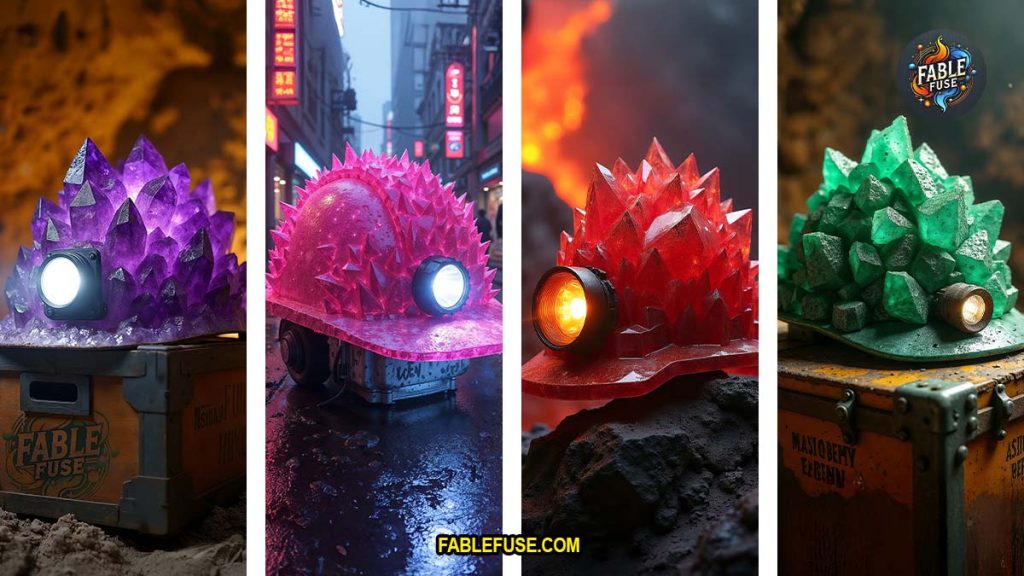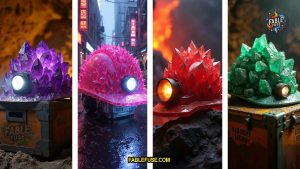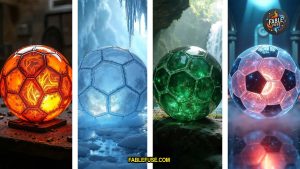Hard Hats: Safety Meets Stone
When you think of a hard hat, you picture a yellow dome of rugged plastic, perched atop the head of a construction worker or miner, deflecting debris and ensuring survival on chaotic job sites. You don’t typically imagine it gleaming in rose quartz, pulsing with the luster of obsidian, or swirling with the raw texture of banded agate. But what if the world of industrial safety collided with the mystique of the mineral kingdom? Welcome to the universe of crystal hard hats. Helmets forged from the Earth, for those who shape it, study it, or dream inside it.
The True Purpose of a Hard Hat
At its core, a hard hat is designed to protect the skull from falling objects, impacts, electrical shocks, and debris. On construction sites, they are not optional. They are required. The physics behind this are serious. The curved design deflects energy, while inner suspensions distribute force to reduce injury. Whether you are laying steel beams or mapping out new tunnels, headgear is the simplest, smartest insurance against the unpredictable.
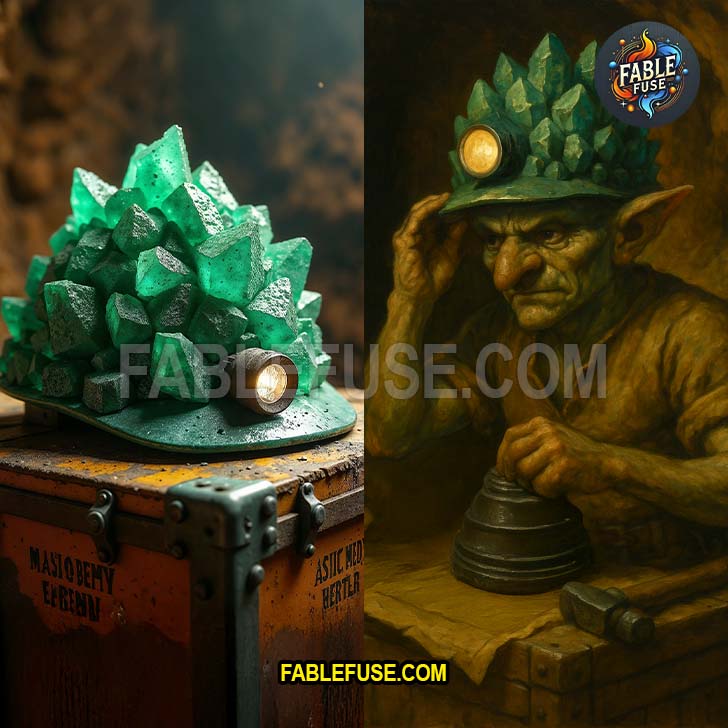
So where do crystals come in? It starts with function, but quickly spins into form, identity, and even intuition.
When Crystals Become Helmets
Crafting a hard hat from crystal is not as strange as it seems. Minerals like quartz, obsidian, or bismuth have natural hardness and resilience. They are carved, shaped, and reinforced with composite layers, then bonded to fit like a conventional helmet. The inner structure is still foam or suspension webbing, keeping comfort and safety standards intact. But the exterior? It is a sculptural shell of energy and brilliance.
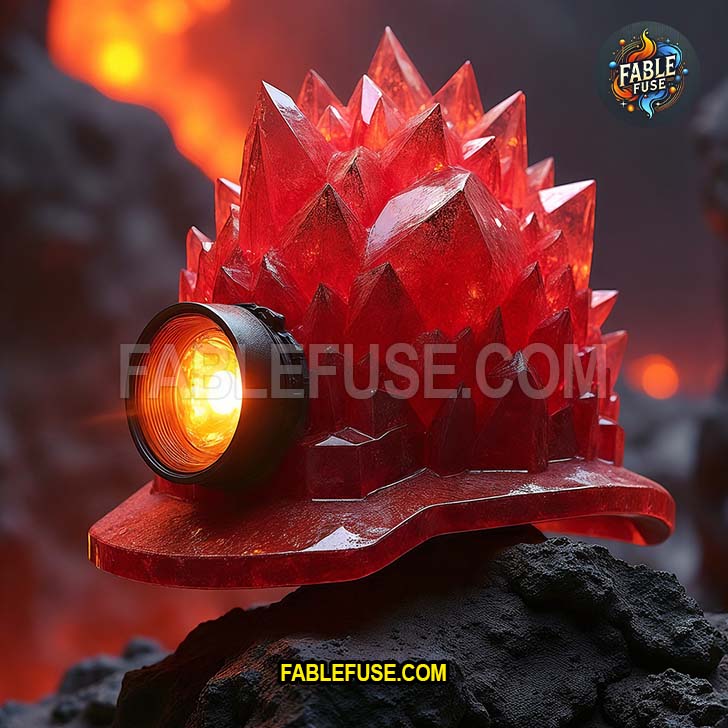
From a distance, a rose quartz helmet glows like a battle crown. An emerald helmet has the vibe of ancient royalty. Pyrite catches the light and throws it across tunnel walls. Wearing one is like wearing a treasure that also happens to protect your head. And for many wearers, it goes beyond protection. It becomes a source of connection.
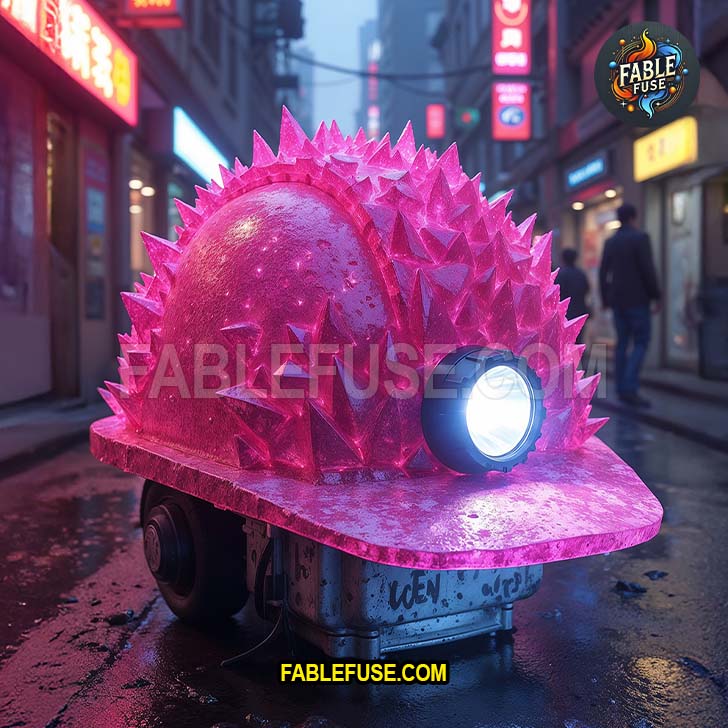
The “Dozing Helmet” and Intuitive Discovery
There is a fascinating, slightly ludicrous idea in the rock-hounding and metaphysical communities. Certain helmets may help guide the wearer toward deposits of the same material. The theory is that the helmet resonates when it is near its own kind. This concept, often nicknamed a \”dozing helmet,\” has yet to be proven in any scientific setting, but anecdotal stories abound.
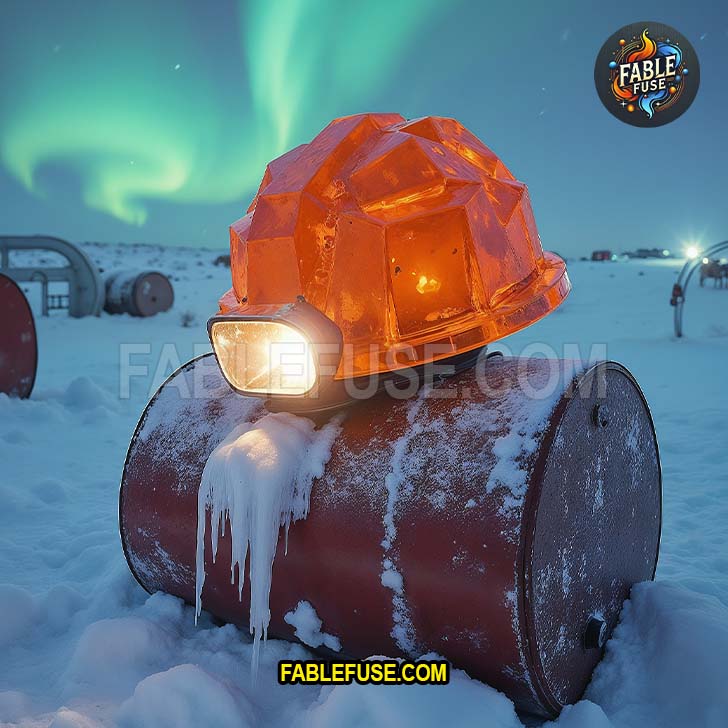
One prospector swears his chrysocolla-lined helmet began vibrating subtly when he approached a previously undocumented copper vein. Another described feeling a warmth in his lapis lazuli helm right before spotting a cluster of similar stones half-buried near a riverbed. Skeptics call it coincidence or confirmation bias. Believers call it mineral memory. Whether you buy into it or not, it adds an air of mystery and fun to an already head-turning object.
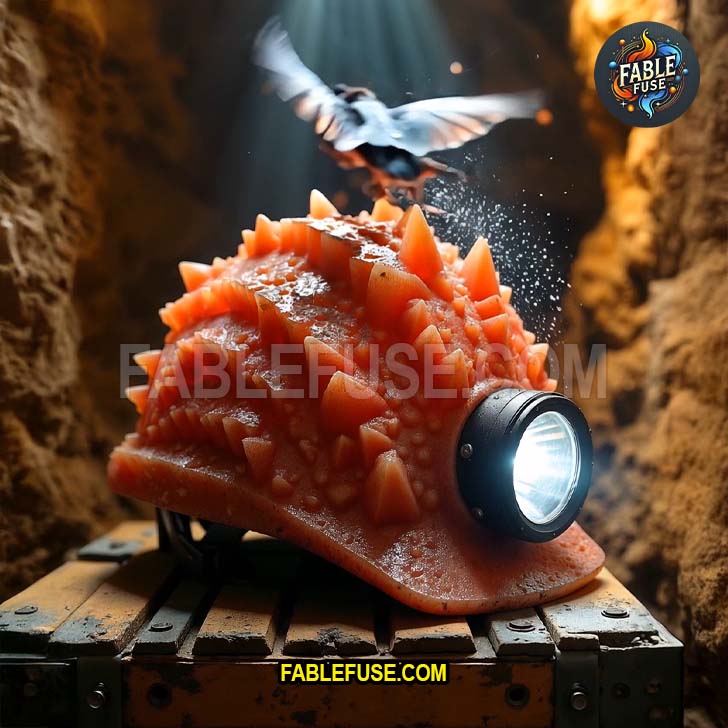
Materials That Inspire and Shield
- Obsidian – Volcanic glass that looks like black mirror. Known for protection and clarity.
- Rose Quartz – Soft pink with a glowing heart energy. Brings calm into chaotic worksites.
- Amethyst – A bold purple crystal that enhances focus and spiritual grounding.
- Clear Quartz – Pure and refractive. Allegedly amplifies intention and clarity of mind.
- Pyrite – Golden and glittering. Brings a sense of strength and shields negativity.
- Chrysocolla – Turquoise-streaked mineral tied to communication and insight.
- Bismuth – Rainbow-metallic with a geometric shimmer. Known for transformation and mental expansion.
- Tiger’s Eye – Grounding, golden-brown stripes for courage and decision-making.
- Emerald – Symbol of protection and foresight, said to strengthen the eyes and the spirit.
Symbolism and Energy on the Job
Beyond their beauty, these helmets turn safety gear into storytelling devices. A foreman wearing obsidian channels grounded command. A site leader in lapis lazuli exudes wisdom and calm. Workers say they feel less like anonymous figures in orange vests and more like characters in a saga. Mineral warriors with gear that glows under sun or floodlight.
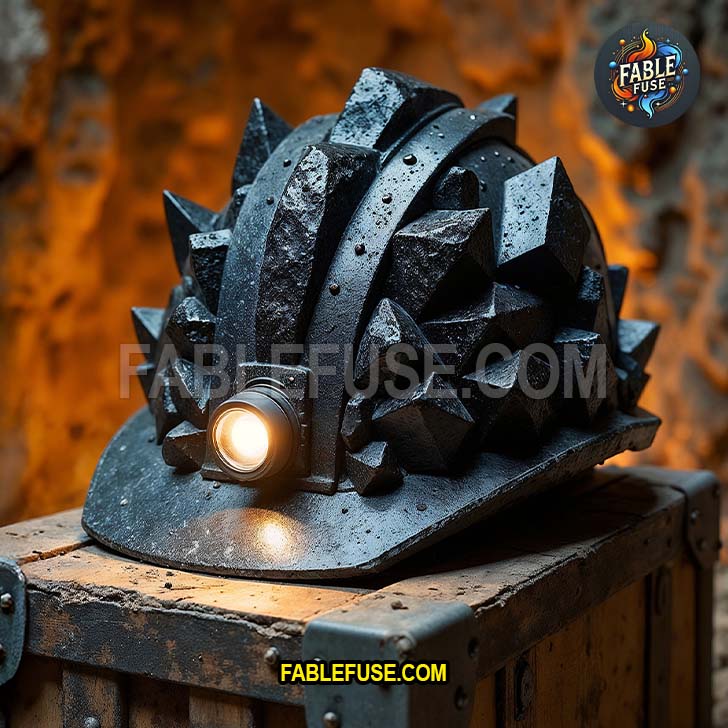
Some wearers even personalize their helmets further with embedded stones, sigils, or LED lights that shimmer through translucent crystal. The result is a fusion of ancient material with futuristic style, all while keeping the most important part of your body safe.
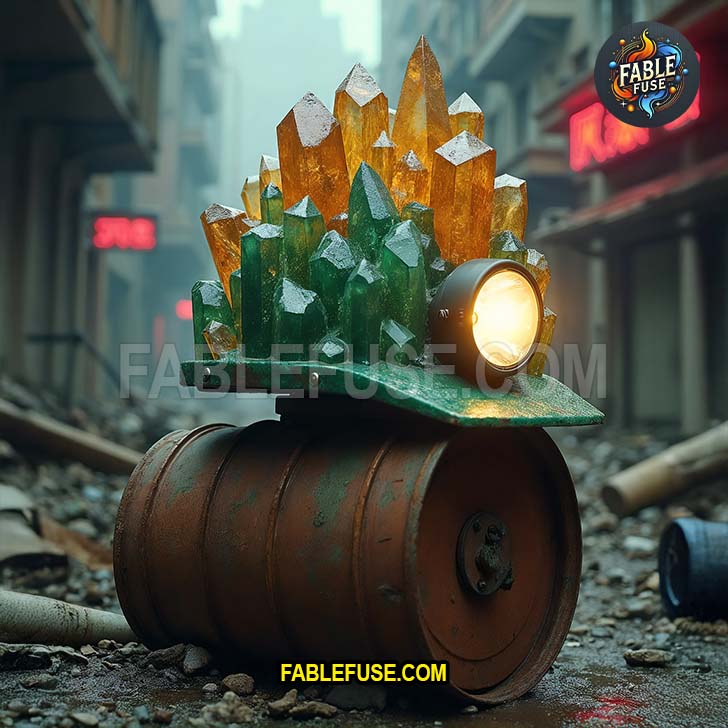
Fashion or Function?
Make no mistake, these helmets are built for work. They are tested against standard impact requirements and include certified suspension systems. Still, questions are valid. Are they heavier? Usually. Are they more fragile? Sometimes. Are they expensive? Absolutely. Most crystal helmets are custom orders and can cost hundreds to thousands of dollars depending on the material and carving detail.
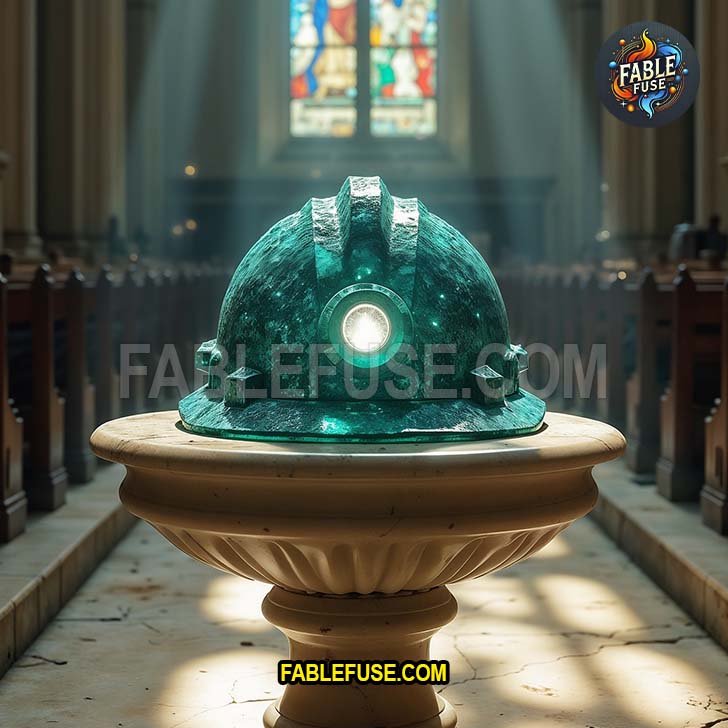
But for many, it is worth it. Because wearing a helmet like this is not just about avoiding danger. It is about owning identity. It is about bringing reverence to dangerous, important work. And sometimes, it is just about feeling unstoppable while you drill through the crust of the world.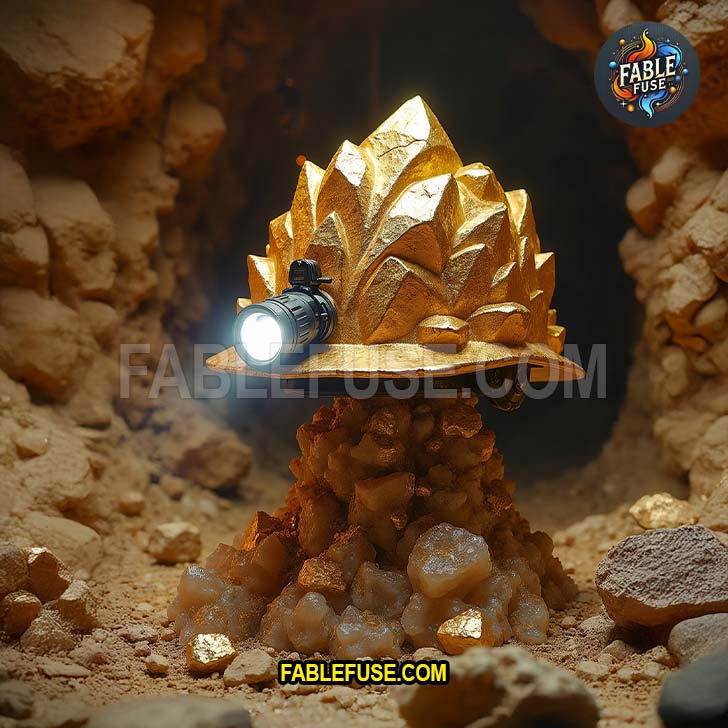
Helmets in Pop Culture and Fantasy Media
It did not take long for crystal helmets to catch the eye of visual creators. Indie films, sci-fi concept artists, and even comic book illustrators have picked up on the idea of gleaming mineral helmets as part of their costume and worldbuilding. Imagine a galactic mining crew where each worker wears a helmet made from a different crystal, reflecting their role or heritage. Or a post-apocalyptic tribe that forges armor from the stones they dig up, believing each carries the soul of the earth itself. These ideas are no longer confined to fantasy—they are being made, filmed, and even 3D printed into reality.
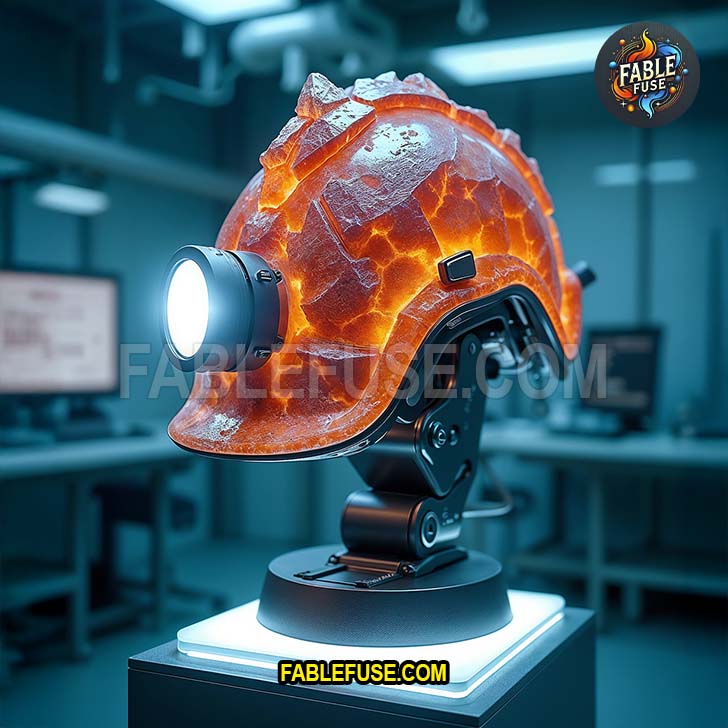
Influence in Cosplay and Convention Spaces
Cosplayers and artisans have begun incorporating crystal hard hats into costumes for conventions and themed events. Some create elaborate mining outfits with glowing LED geodes. Others go full fantasy, pairing their helmets with armor, cloaks, or even floating drone lights. These helmets allow characters to feel grounded in something both fantastical and tactile. In some circles, the helmets are so striking they become conversation pieces, with fans asking what mineral they represent, what game they came from, or where they can get one too.

The Forgotten Origins: Helmets in Ancient Crystal Lore
Long before plastic and polymer, legends whispered of helmets carved from mountain hearts and lightning-struck stone. Some tales speak of ancient engineers who wore quartz circlets etched with constellations, using them to map the stars and dig the tunnels beneath lost civilizations. In South American folklore, obsidian headgear was said to grant the power of night vision and silence. In Arctic myths, blue calcite helms allowed wearers to hear whale songs under ice. While these may sound like stories, the spiritual importance of crystal headpieces spans cultures — and today’s hard hats could be seen as a distant echo of that lineage.
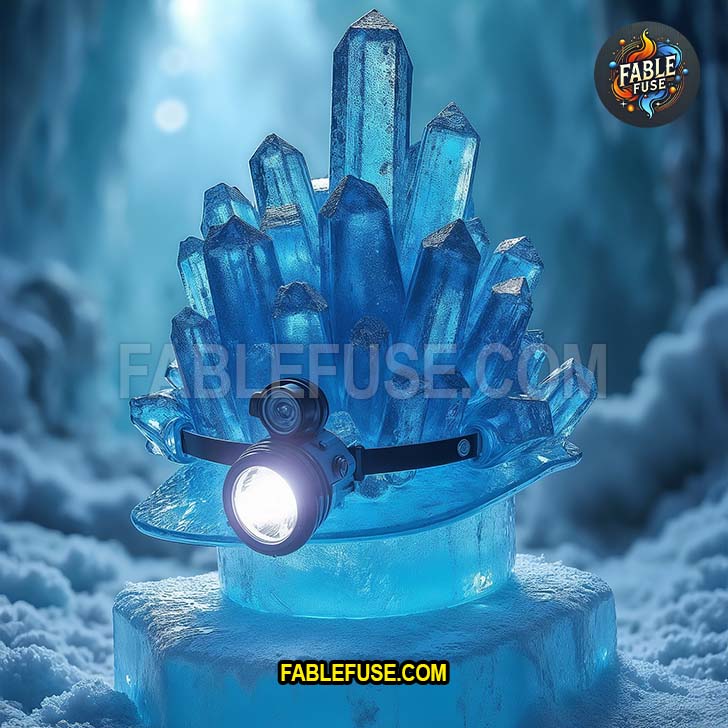
Biometric Interfaces and Conscious Materials
What if a crystal helmet could sync to your heart rate? Future-forward creators are already experimenting with embedded bio-sensors and smart materials. Imagine a clear quartz helmet that glows warmer as your pulse rises, alerting you to stress or physical exhaustion. Or a bismuth helmet that reacts to environmental shifts – temperature, humidity, or even magnetic fields – by shifting color. The dream? Helmets that don’t just protect your body, but talk to it. That sense of connection could become essential in high-risk environments or long-term explorations where machines and humans need to blend intuitively.
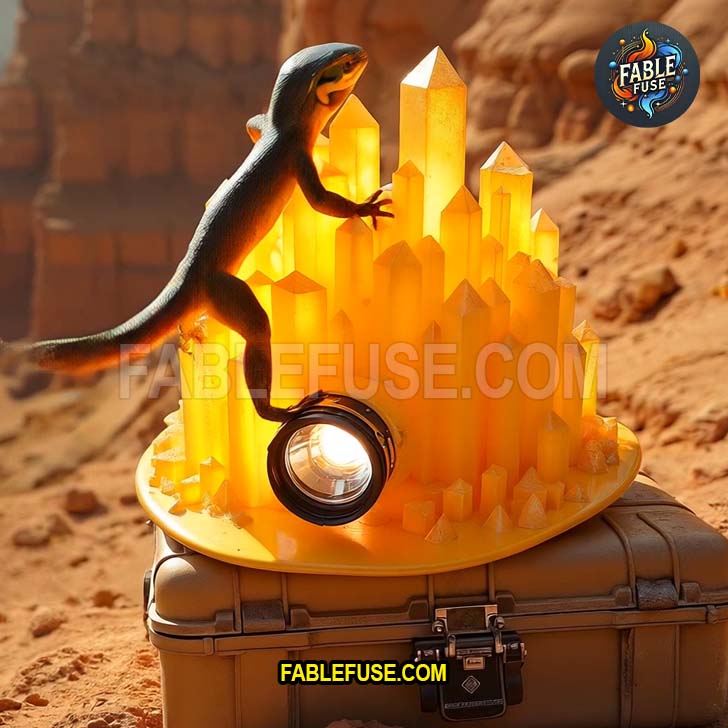
Multiverse Gear and Dimensional Signatures
In the more metaphysical corners of this world, some believe that crystals act as anchors between dimensions. If that’s true, what would a crystal helmet do when paired with meditation or lucid dreaming techniques? Could a helmet made from fluorite or labradorite help stabilize dream states or enhance astral projection? Could wearing one in a sensory-deprivation tank tune the wearer into other frequencies, or open doorways in altered states of consciousness? These theories remain on the fringe, but artists and seekers are experimenting with them as tools of self-exploration and inner travel.

Alien Toolkits and Off-World Mining
Think beyond Earth. On a Martian colony or asteroid mining rig, standard gear may fail under radiation or mineral storms. Designers speculate that high-vibration materials like selenite or shungite could become useful not just for shielding energy but balancing it. A crystal-infused helmet may one day serve dual purposes — blocking micrometeoroids while stabilizing emotional resonance among isolated workers millions of miles from home. Sci-fi writers are already sketching suits lined with stone, meant to calm explorers living far beyond natural sunlight. These aren’t just space helmets. They’re emotional armor in deep space.
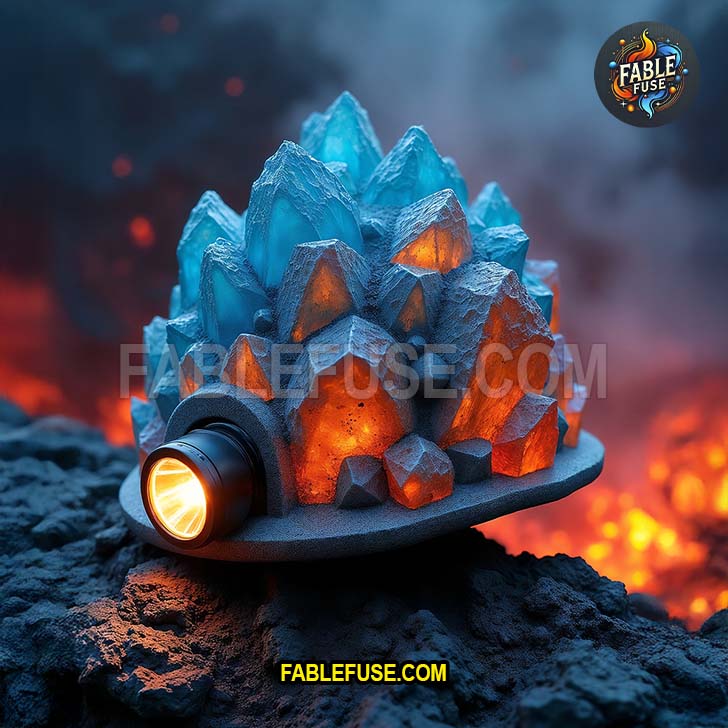
Spiritual and Metaphysical Uses
Beyond worksites and costume halls, crystal helmets have started to appear in metaphysical spaces. Sound healers and energy workers sometimes wear them during ceremonies or rituals, believing that the crystal over the crown chakra helps tune awareness or create a focused spiritual channel. A lapis lazuli helmet is said to enhance inner vision. A clear quartz version, especially one with light elements inside, is used to amplify intention during guided meditations. These uses are far from mainstream, but in crystal healing circles, they are treated as tools of amplification, focus, and alignment.
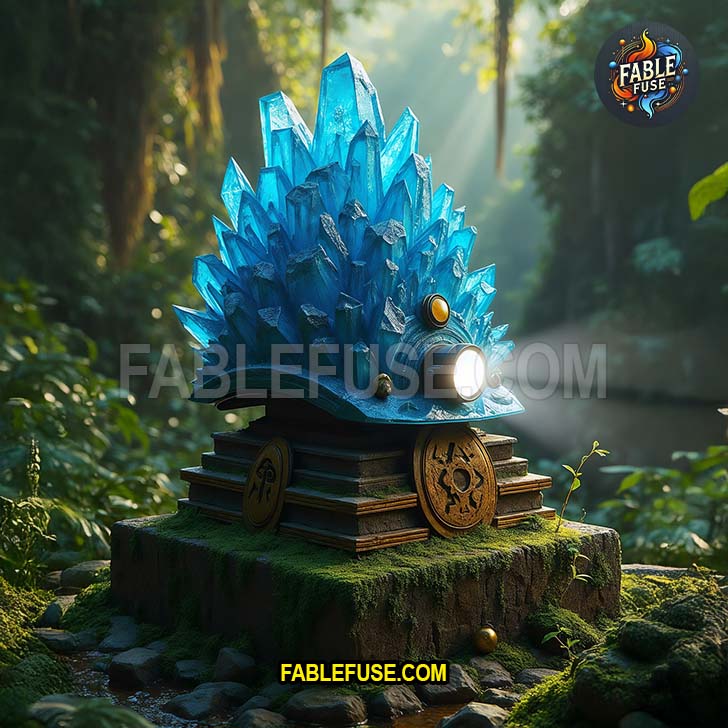
DIY and Artisan Helmets
While many crystal helmets are custom-carved by professional lapidaries, a growing number of artists and tinkerers are making their own versions. Some begin with standard construction helmets and embed crystal fragments into the surface. Others coat the shells with layers of resin mixed with crushed stones, then polish to a mineral-like sheen. A few makers use lightweight imitation crystals to create affordable fantasy versions that mimic the feel without the weight or fragility of real minerals. For hobbyists, creating a crystal helmet is not just crafting – it is connecting with the materials on a hands-on level.

Practical Challenges and Safety Realities
Despite their beauty, crystal helmets come with practical limits. They are heavier than typical helmets, especially when made with denser stones. Prolonged wear may cause neck strain or fatigue. They are also more fragile in some cases. While built with reinforced interiors, the crystal surface can still chip or crack under hard impact. For industrial settings, these helmets are better used as symbolic or ceremonial gear rather than everyday protective equipment. Some companies use them as gifts or milestones, presented to team members upon completion of major projects or safe record achievements.
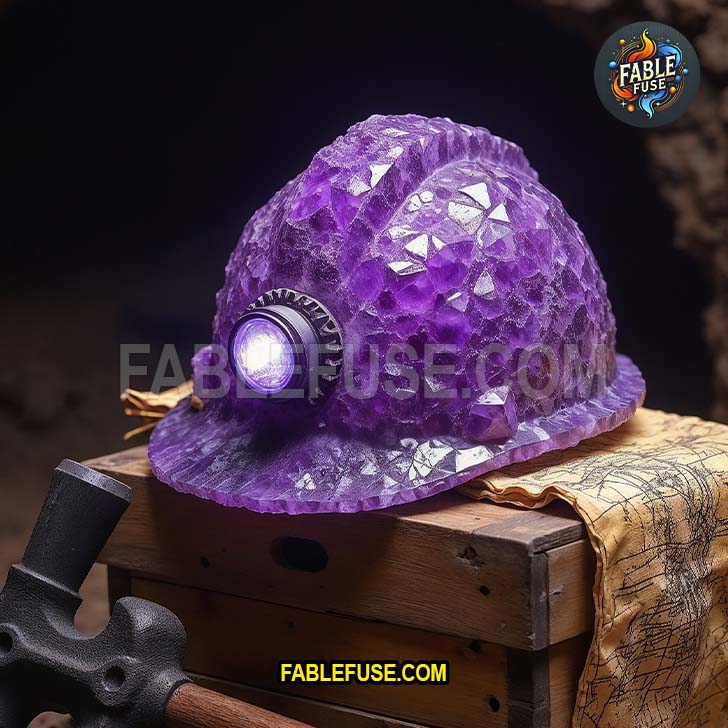
Collecting, Displaying, and Preserving
As interest grows, some enthusiasts have begun collecting crystal hard hats like museum pieces. They are displayed in lighted glass cases, perched on custom pedestals or busts, with descriptions of the stone and the carving technique. Others use them as altar pieces, placing them among crystals and tools of intention. Because they are sculptural and symbolic, they lend themselves well to both décor and spiritual display. Preserving them means avoiding excessive heat or moisture, and cleaning with soft, non-abrasive cloths to protect their polish.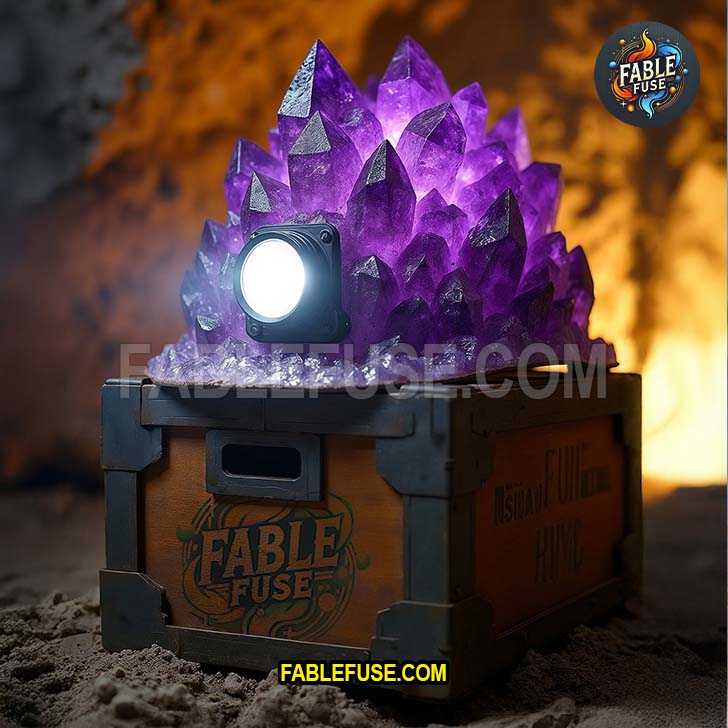
How to Start Your Own
If you are curious about owning or making a crystal helmet, start with the question: what stone speaks to you? From there, you can search for makers online, contact lapidary artists, or explore crafting your own with resin, crystal shards, or layered composite. Safety should always come first. For display or light ceremonial use, real crystal works beautifully. For functional protection, use a certified safety helmet and decorate it with responsibly sourced or synthetic stones. With creativity and care, you can wear something that protects, inspires, and connects you to the ancient earth.
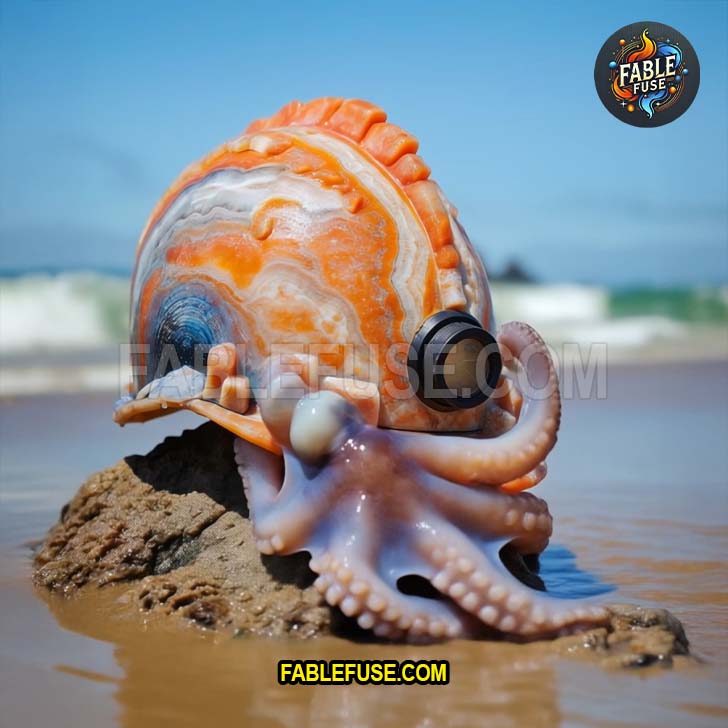
Summary of Features and Possibilities
- Crystal helmets combine safety, storytelling, and spiritual symbolism
- Real or synthetic stones used include quartz, obsidian, pyrite, bismuth, and more
- Applications range from construction sites and cosplay to rituals and sci-fi concept art
- Theories explore intuitive detection, dimensional tuning, and biometric feedback
- Custom designs may include embedded lights, sensors, symbols, or personal stones
- Helmets are appearing in media, museums, and wellness spaces around the world
- As materials and tech evolve, these helmets may bridge ancient memory and futuristic design
Ready to Build Your Own Legend?
The hard hat is more than protection. It is a badge of purpose. When forged from crystal, it becomes a vessel of meaning, history, and vision. Whether you wear yours into a cavern, a costume contest, or a meditation room, know this — you carry something ancient. Something powerful. And maybe, just maybe, it is listening to the stones beneath your feet.


